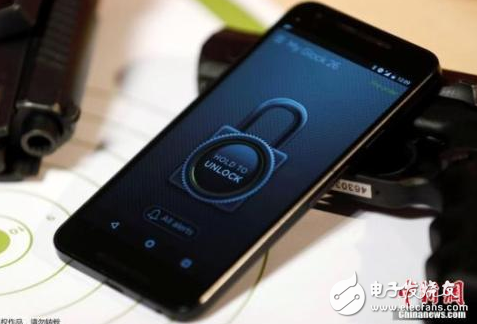The US "World Journal" recently published a paper saying that when a smartphone hears you say it is cold and hears you screaming, what will happen? At present, the AI ​​function on the smartphone is still in its infancy, Gartner predicts that the smartphone with AI function will increase to 80% in 2022, and pointed out ten far-reaching applications.

Data map: Smartphone.
Gartner, an international research and consulting consultant, said that artificial intelligence (AI) will become the key to product differentiation among smart phone manufacturers. The AI ​​solution on smartphones will become an important part of the blueprint for each manufacturer in the next two years. .
Gartner predicts that in 2022, smart phones with AI capabilities will increase from 10% in 2017 to 80%. Gartner proposes the ten far-reaching applications of AI smart phones, enabling manufacturers to create more value for consumers.
1. "Digital Self" in the mobile phone:
Smart phones will become an extension of the user, recognizing users and predicting their next move. The “digital self†understands who you are, what you want, when you want to do it, and how you want it to be done, and perform tasks according to your authority.
2. User verification:
Simple password-based authentication becomes increasingly complex and less efficient, resulting in poor security, user experience, and high cost of ownership. Security technology combines machine learning, biometrics, and user behavior to dramatically increase availability and self-service capabilities. For example, a smart phone can capture and learn user behavior, such as walking, sliding or pressing a mobile phone, scrolling and typing habits, without the need for passwords or proactive authentication.
3. Emotion recognition:
Emotional awareness systems and emotional computing (affecTIve compuTIng) enable smart phones to detect, analyze, process and respond to people's emotional state and mood. The increasing popularity of virtual personal assistants (VPAs) and other avi-based systems (conversaTIonal systems) has driven the need for emotional quotient (EQ) to achieve better context and service experiences. For example, car dealers can use the front lens of a smart phone to understand the driver's physical condition or detect the degree of fatigue, thereby improving driving safety.
4. Natural language understanding:
Continuous training and deep learning on smart phones will improve the accuracy of speech recognition and better understand the user's specific intentions. For example, when the user says "the weather is very cold," his real intention may be "please buy a jacket online" or "please raise the air conditioner temperature." Or when traveling abroad, natural language comprehension can enable smartphones to achieve near real-time speech translation.
5. Augmented Reality (AR) and AI Vision:
It is expected to be equipped with AR on approximately 100 million Android devices by the end of next year. Some agencies expect that almost all new Android phones will be preloaded with AR features next year. For example, an application that assists in collecting user data and detecting diseases such as skin cancer or pancreatic cancer is an example of using AR.
6. Device management:
Machine learning will increase device performance and standby time. For example, with multiple sensors, a smart phone can understand and learn the behavior of the user, such as knowing which application to use. Smart phones will be able to execute commonly used applications in the background to quickly open or close unused applications to save memory and power.
7. Personal Profiling:
Smart phones collect information about behavior and personal analysis. Users can get protection and assistance in real time based on ongoing activities and the environment in which they are located, such as at home, in the car, at the office or at leisure. Service providers such as insurance companies can now focus on customers rather than assets; for example, they can adjust car insurance premiums based on driving behavior.
8. Content review / detection:
The phone can automatically detect restricted content, report suspected images, videos or text, and enable various notification reminders. Computer identification software can detect any content that violates laws or policies. For example, using a company-issued mobile phone to take photos in a high-secret space or to store confidential documents will send a message to the IT department.
9. Personal shooting preferences:
Personal shooting preferences include allowing the smartphone to automatically beautify the photo for the user's personal aesthetic preferences. For example, the aesthetic preferences of the East and the West are not the same, most Chinese prefer the fair complexion, while Westerners prefer the bronze complexion.
10. Audio analysis:
The smart phone's microphone continuously receives real-world sound. The AI ​​function on the device can identify these sounds and guide the user or initiate a specific action. For example, when the smart phone hears the user's snoring, the user's wristband can be activated to cause him to change his sleep posture. (China News Network)
Insulated Copper Tube Terminals
Insulated Copper Tube Terminals,High quality insulated terminal,copper tube terminal
Taixing Longyi Terminals Co.,Ltd. , https://www.lycopperterminals.com
